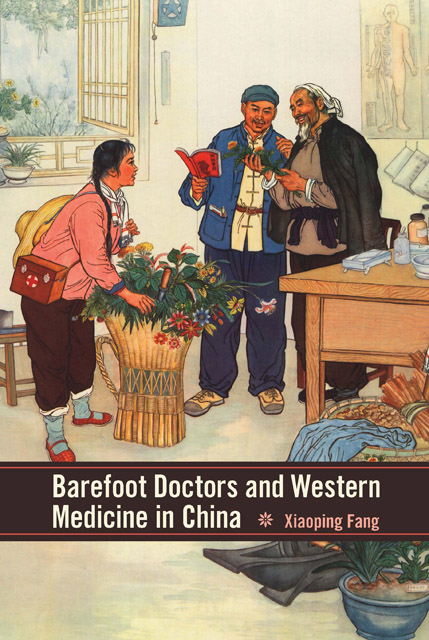Book contents
- Frontmatter
- Contents
- List of Illustrations
- Acknowledgments
- Maps
- Introduction
- 1 Village Healers, Medical Pluralism, and State Medicine
- 2 Revolutionizing Knowledge Transmission Structures
- 3 Pharmaceuticals Reach the Villages
- 4 Healing Styles and Medical Beliefs: The Consumption of Chinese and Western Medicines
- 5 Relocating Illness: The Shift from Home Bedside to Hospital Ward
- 6 Group Identity, Power Relationships, and Medical Legitimacy
- 7 Conclusion
- Appendix One The Organization of the Three-Tiered Medical System in Rural China, 1968–83
- Appendix Two Common Medicines in Chinese Villages during the 1960s–70s
- Abbreviations
- Glossary
- Notes
- Bibliography
- Index
5 - Relocating Illness: The Shift from Home Bedside to Hospital Ward
Published online by Cambridge University Press: 14 February 2023
- Frontmatter
- Contents
- List of Illustrations
- Acknowledgments
- Maps
- Introduction
- 1 Village Healers, Medical Pluralism, and State Medicine
- 2 Revolutionizing Knowledge Transmission Structures
- 3 Pharmaceuticals Reach the Villages
- 4 Healing Styles and Medical Beliefs: The Consumption of Chinese and Western Medicines
- 5 Relocating Illness: The Shift from Home Bedside to Hospital Ward
- 6 Group Identity, Power Relationships, and Medical Legitimacy
- 7 Conclusion
- Appendix One The Organization of the Three-Tiered Medical System in Rural China, 1968–83
- Appendix Two Common Medicines in Chinese Villages during the 1960s–70s
- Abbreviations
- Glossary
- Notes
- Bibliography
- Index
Summary
The Shift from Home Bedside to Hospital Ward
For ordinary Chinese villagers, seeking treatment in a hospital was completely unheard of until the middle of the twentieth century. Until about the mid-1960s, most medical encounters between doctors and patients in the professional medical sector in Chinese villages had changed little since the times of those villagers’ distant ancestors. Hospitalization, wards, referrals, and medical consultations were all still remote and strange ideas to the majority of villagers. This pattern would change in the early 1980s. As the odors of decocted medicinal herbs gradually ceased to fill the village skies, medical encounters were no longer confined to villagers’ homes. Instead, China’s rural residents increasingly left their villages to seek treatment in clinics or hospitals outside their local communities, sometimes through referrals and sometimes on their own initiative. From this point on, hospitalization—including the patient experiences of hospital stays and formal medical consultation—became increasingly common in the lives of villagers. Barefoot doctors were instrumental in bringing these radical changes to the rural population because of their integral role in the process of implanting medical institutionalization in Chinese villages through the establishment of a hierarchical medical system, the formalization of medical encounters, and the codification of the medical community.
Home-Based Medical Encounters in an Isolated Medical World
The previous chapters have discussed the individual, fragmented, and independent nature of professional medical practice in Chinese villages up to the late 1940s. The so-called home-based clinics were usually one-person operations. Chen Hongting’s clinic was unusual in that two practitioners worked there (Chen and his father). However, these home-based clinics lacked many of the features we associate with modern medical clinics, such as the basic layout of a medical building and departmental divisions. Moreover, each clinic basically limited itself to practicing within its community, mainly the township in which it was located. Furthermore, unlike today, there was no clear spatial demarcation of daily medical practice. Medical encounters between doctors and patients mainly occurred in the patients’ homes. There were certain advantages to this method, since seeing the patient’s home enabled doctors to contextualize illness more accurately, integrate this information with the patient’s description of symptoms, and tailor diagnosis and treatment to the patient’s environment. For example, doctors could not only make sure that patients were looked after, they could also observe evidence of strained relationships between family members that might obstruct patients’ recovery.
- Type
- Chapter
- Information
- Barefoot Doctors and Western Medicine in China , pp. 125 - 150Publisher: Boydell & BrewerPrint publication year: 2012



